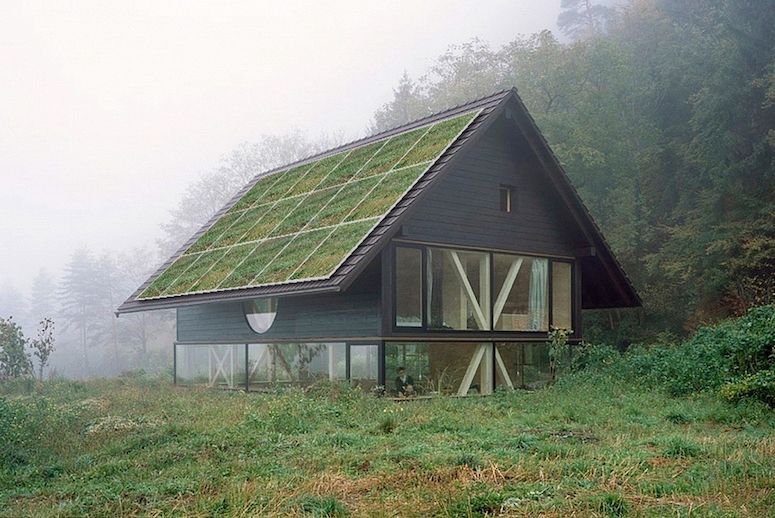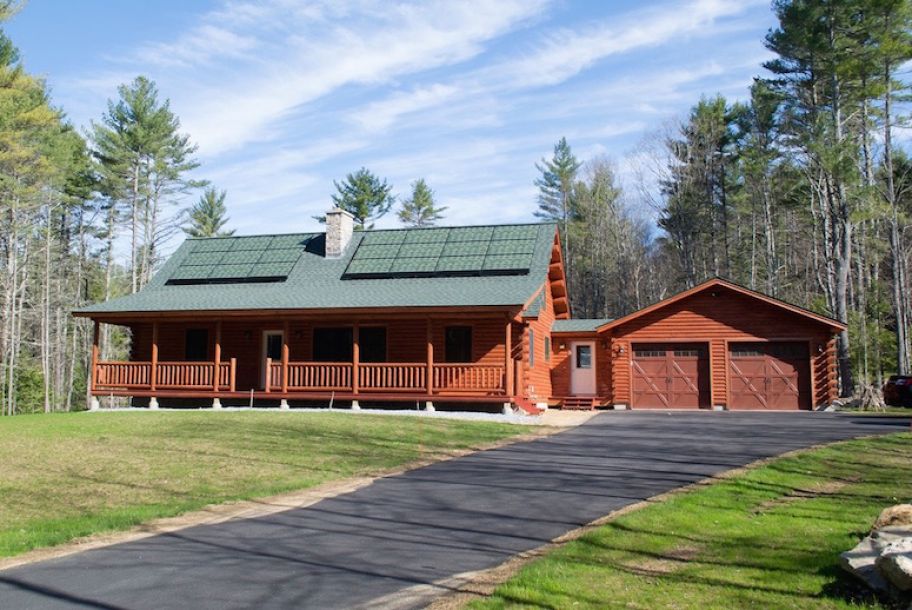A Boston start-up hopes to persuade people to go solar by making photovoltaic panels more aesthetically appealing…

When it comes to solar panels, the industry has long embraced Henry Ford’s sale pitch for the Model T: You can have any color as long as it’s black. Now a Boston start-up has developed a technology to turn your roof into a palette of electricity-generating colors and patterns.
Starting next year, Sistine Solar will begin selling “SolarSkin” panels that blend in with the texture of a roof by mimicking tiles, slate, wood shingles and other materials. Want a truly green roof? Sistine Solar panels can be made to look like grass.
Company founders Senthil Balasubramanian and Ido Salama came up with the idea while studying business at the MIT Sloan School of Management. They hope their product will persuade people to go solar who had been reluctant to buy standard blue-black solar panels for esthetic reasons.
“We are lovers of solar and clean energy and wanted to figure out how to get people motivated to love solar too,” Salama said. “We learned that many people thought solar panels were ugly. We found an almost latent rejection of solar that people weren’t really talking about.”
The panels are now available on preorder, and installations will begin in 2017. Salama said the company has seen “tremendous demand” but declined to say how many solar panels have been sold…

The camouflage panels function the same way as traditional photovoltaic panels by converting sunlight directly into electricity but with a trompe l’oeil twist.
“We added a little bit of a layer that allows a majority of the sunlight to go through while some that is reflected,” Salama said. “What gets reflected back tricks your eye into thinking you’re seeing that image.”
The technology can produce almost any color or mimic any texture. It could even be used to create murals, “although that’s more complicated,” Salama said.
The SolarSkin panels convert about 15 percent to 17 percent of sunlight into electricity, Salama said, which is roughly the same rate of efficiency as the average household panel, although some have efficiency rates as high as 23 percent. The costs are “slightly” higher than the average traditional panel, he added, but still below the most expensive models on the market.
Some companies make solar shingles that look like slate or asphalt, although solar shingles are typically less efficient than panels and absorb heat directly into the roof.
Salama said he believes Sistine Solar is the first company to create custom-made panels that project images that faithfully mimic any rooftop color, pattern, or design.
France’s Road of the Future Is Paved With Solar Panels…
“I personally have not seen anything like this,” said James Hewett, program manager at the American Council on Renewable Energy.
“Broadly speaking, what companies like this show is the maturity of the sector and a shift to consumer choice,” Hewett added. “For consumers that were hesitant to put panels on roofs because of esthetics, this would provide them with an option that would help assuage this reservation by giving them a greater retail choice in their energy production.”
Sistine Solar’s new technology has not gone unnoticed. The firm won the 2013 MIT Clean Energy Prize in the renewable energy category and, last November, received a $1 million grant from the U.S. Department of Energy SunShot Initiative to help commercialize its products.
The company designed a solar canopy that resembles green grass for the courtyard at the Starwood Element Hotel in Irving, Texas.
“Showcasing beautifully designed solar panels and weaving them into the guest experience is a great way to change people’s perception of renewable energy and goes hand-in-hand with Element’s ‘green without compromise’ mantra,” Paige Francis, Starwood’s vice president for global brand management, wrote in an email.
Microsoft is also a Sistine Solar client.
“By designing products that generate electricity more elegantly, we can help drive the adoption of clean energy,” Salama said. “By making solar more beautiful to appeal to the masses, we hope to get from 1 percent of homes with solar energy to 99 percent.” (via TruthTheory)
If you like this idea, be sure to share it with your friends and inspire someone you know. Anything becomes possible with just a little inspiration…
